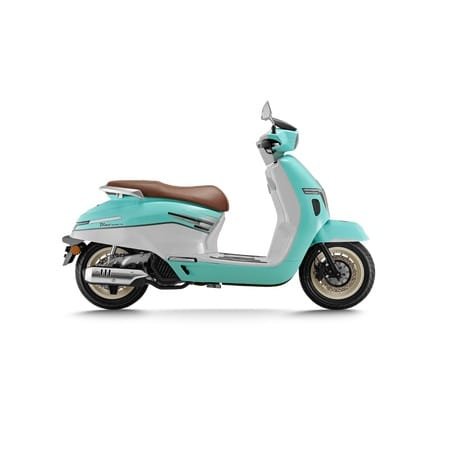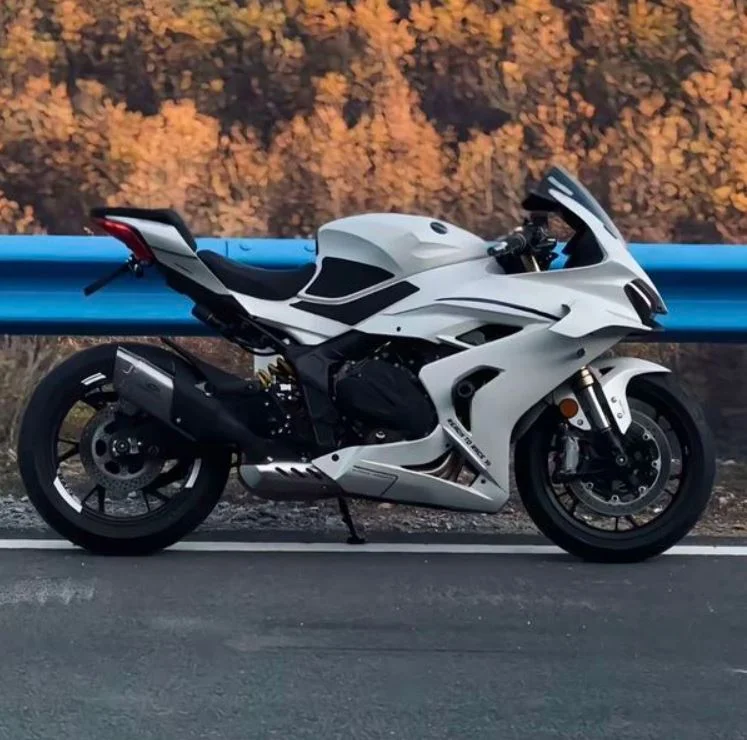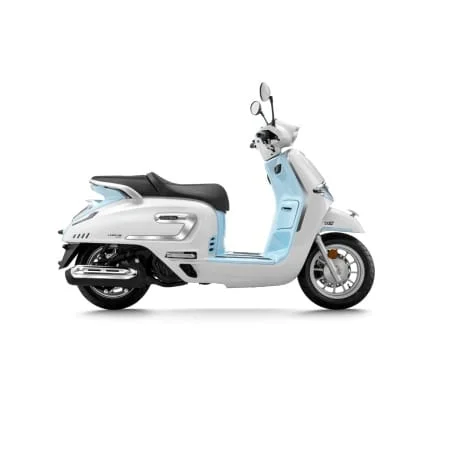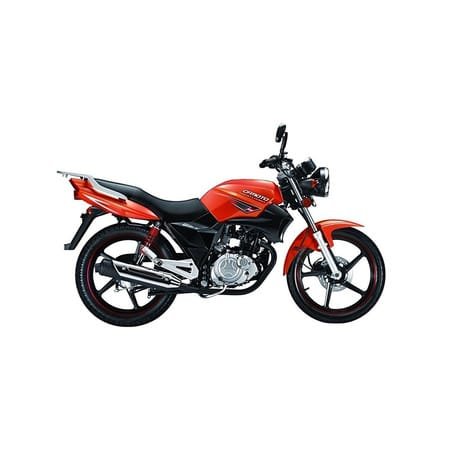QJMOTOR Dino Review – A Bold New Era of Modern Cruising in 2025
Introduction to QJMOTOR and the Dino Model Line
QJMOTOR has swiftly expanded its global presence, catering to riders looking for high-performance motorcycles that don’t burn a hole in their wallets. Known for innovation and value-driven design, the brand has begun making waves in segments traditionally dominated by Japanese and European giants.
Enter the QJMOTOR Dino—a fresh take on the classic cruiser. Aimed at new-age riders who appreciate relaxed, laid-back riding with a touch of style and modernity, the Dino is QJMOTOR’s foray into the world of entry-level cruisers.
Blending old-school appeal with new-age technology, the Dino stands out not just in design, but also in its impressive engine configuration and thoughtful rider ergonomics.
Design and Aesthetic Appeal
From first glance, the QJMOTOR Dino exudes cruiser DNA. Long and low, it sports a stretched fuel tank, swept-back handlebars, and a chunky rear tire—all the ingredients of a traditional cruiser.
Key design highlights include:
-
Classic teardrop fuel tank with bold QJMOTOR badging
-
Round LED headlamp framed in black housing
-
Twin-pipe exhaust enhancing the bike’s visual heft
-
Split seat design for comfort and style
The build quality feels premium, with thick body panels, chrome accents in key areas, and well-finished paint options. Available shades like matte black, deep blue, and wine red give buyers multiple personalization options right off the showroom floor.
Engine and Performance Specs
One of the most notable features of the Dino is its engine. Depending on the market, it’s offered in two main variants:
-
300cc V-Twin engine
-
Single-cylinder 250cc version (in select regions)
The V-Twin version, in particular, is the headline-grabber:
-
Power Output: ~30 hp
-
Torque: ~26–28 Nm
-
Top Speed: Around 135 km/h (84 mph)
This setup allows the Dino to cruise effortlessly at highway speeds while maintaining smooth power delivery in city traffic. The V-Twin architecture also ensures low-end grunt, giving riders the satisfying torque pull cruisers are known for.
Ride Quality and Cruising Experience
Riding the Dino feels smooth and composed. With its long wheelbase and low seat height, the bike is stable even at higher speeds. The front telescopic forks and dual rear shock absorbers do a commendable job of soaking up road imperfections.
It’s tailored for cruising, not racing—which means you get a relaxed, floating-on-asphalt experience rather than a jittery sportbike rush. Whether you're gliding through urban streets or exploring winding highways, the Dino stays planted and confident.
Ergonomics and Rider Comfort
Cruisers are all about comfort, and the QJMOTOR Dino lives up to that promise. Its ergonomics are carefully engineered to deliver a relaxed, fatigue-free experience, ideal for both daily commutes and weekend getaways.
-
Seat Height: Around 700–730mm, making it accessible for riders of all heights
-
Seat Design: Broad, well-padded split seat provides plush support for rider and pillion
-
Handlebar Reach: Wide and swept-back, allowing an upright posture with minimal wrist strain
-
Footpeg Positioning: Forward-set foot controls enhance laid-back riding comfort
On longer rides, the bike maintains composure and doesn’t transfer engine or road vibrations to the rider, thanks to rubber-mounted pegs and solid insulation. Pillion comfort is also commendable with a flat seat and optional backrest accessories available.
Technology and Feature Integration
Despite its retro cruiser looks, the Dino integrates modern features for today’s riders:
-
Instrument Console: A combination of digital and analog readouts, with RPM, speed, fuel gauge, gear indicator, and trip meter
-
Lighting: Full-LED setup including headlamp, taillamp, and turn signals
-
Safety Aids: Dual-channel ABS (in most markets), engine kill switch, and side-stand cut-off
-
USB Charging Port: Available in higher variants for on-the-go convenience
The dashboard is clean and easy to read even under direct sunlight, and the electronics are user-friendly with no unnecessary complexity.
Transmission and Braking System
The QJMOTOR Dino is equipped with a 6-speed manual gearbox that’s refined and smooth. Gear transitions are fluid, and the ratios are well-spaced for both city traffic and highway stretches.
-
Clutch: Light and progressive, making the Dino suitable for new riders
-
Front Brake: 300mm disc with dual-piston caliper
-
Rear Brake: 240mm disc with single-piston setup
-
Braking Tech: Dual-channel ABS ensures safe and balanced stopping in all conditions
Brake bite is firm yet progressive, with good feedback at both levers. Whether navigating city traffic or pulling quick stops at highway speeds, the Dino’s brakes inspire confidence.
Exhaust Note and Sound Profile
The V-Twin engine in the Dino delivers a distinct, throaty growl that cruiser lovers will appreciate. It’s not obnoxiously loud but gives a deep, rumbling exhaust note that enhances the bike’s road presence.
The dual exhaust pipes add a symmetrical aesthetic and contribute to the balanced acoustics. For those who enjoy custom touches, the Dino supports aftermarket exhaust upgrades without complex ECU remapping.
Fuel Economy and Tank Capacity
Despite its cruiser identity, the Dino doesn’t guzzle fuel. It balances power and efficiency smartly:
-
Tank Capacity: 14–15 liters (varies by market)
-
City Mileage: 28–32 km/l
-
Highway Mileage: 35–38 km/l
-
Estimated Range: 450–500 km per full tank
Its large tank and efficient engine make it great for long-distance rides without frequent fuel stops—exactly what a cruiser should offer.
Build Quality and Material Selection
QJMOTOR has put a lot of attention into the Dino’s build quality:
-
Frame: Tubular steel frame offering durability and stability
-
Panels: Solid plastic and metal components with premium finishes
-
Switchgear: Responsive and durable buttons with good tactile feel
-
Paint: High-gloss, UV-resistant colors with deep texture and clear coat protection
Whether it’s the chrome accents or the finish on the levers and grips, the Dino feels like a well-assembled, cohesive machine that can age gracefully over the years.
Maintenance and Long-Term Ownership
As with most QJMOTOR offerings, the Dino is designed to be low-maintenance and cost-effective over the long term.
-
Oil Change Intervals: Every 3,000–4,000 km
-
Basic Service Cost: Low to moderate depending on the region
-
Parts Availability: Strong presence in Asia, growing in Europe and Latin America
-
Warranty: Typically 2 years or 30,000 km
Users report minimal reliability issues, and the brand's growing service network ensures access to spare parts and technical support.
Comparison with Competing Cruisers
| Feature | QJMOTOR Dino | Keeway V302C | Royal Enfield Meteor 350 | Honda Rebel 300 |
|---|---|---|---|---|
| Engine | 300cc V-Twin | 298cc V-Twin | 349cc Single | 286cc Single |
| Power | ~30 hp | 30 hp | 20.2 hp | 27.3 hp |
| ABS | Dual-channel | Dual-channel | Dual-channel | Dual-channel |
| Mileage | 30–35 km/l | 28–32 km/l | 35–38 km/l | 32–36 km/l |
| Price | Affordable | Higher | Mid-range | Premium |
The QJMOTOR Dino matches or surpasses its rivals in most aspects, especially considering the price-to-performance ratio and its V-Twin appeal.
Pros and Cons of the QJMOTOR Dino
Like any motorcycle, the QJMOTOR Dino has its strengths and areas where it could improve. Here’s a detailed breakdown:
| Pros | Cons |
|---|---|
| Stylish V-Twin cruiser design | Slightly heavier in tight city traffic |
| Comfortable ergonomics for long rides | Limited variant choices in some markets |
| Powerful yet refined engine | Basic tech interface (no TFT or Bluetooth) |
| Great exhaust note | Brand recognition still growing outside Asia |
| Competitive pricing | Limited aftermarket support compared to rivals |
| Fuel-efficient for its class | Some vibration at high RPMs (minor) |
Overall, the Dino is a well-balanced motorcycle offering tremendous value for money, especially for new or budget-conscious cruiser fans.
Price, Variants, and Availability
The QJMOTOR Dino is priced attractively in the entry-to-mid cruiser segment. Here’s a look at the pricing across key markets:
-
India (Expected): ₹2.50 – ₹2.80 lakh
-
Europe: €3,900 – €4,200
-
Latin America: $3,200 – $3,800
-
Asia (excluding China): $2,900 – $3,500
Variants are typically distinguished by minor cosmetic upgrades, exhaust styling, and optional accessories like pillion backrests, saddlebags, or crash guards.
Color options generally include:
-
Matte Black
-
Metallic Red
-
Deep Blue
-
Chrome & Black two-tone (variant specific)
As of 2025, availability has expanded across Asia, Eastern Europe, and Latin America, with QJMOTOR continuing to grow its dealer and service footprint.
Rider Profile: Who Is the Dino Meant For?
The QJMOTOR Dino is perfect for:
-
New Riders: The low seat height, easy handling, and smooth power delivery make it beginner-friendly.
-
Weekend Cruisers: For those who enjoy leisure rides on the weekends, the Dino provides the right balance of comfort and style.
-
Budget Enthusiasts: Riders wanting a premium cruiser experience without the premium price tag.
-
City + Highway Dual Users: It’s versatile enough to handle traffic while still comfortable on open roads.
If you’ve ever dreamed of owning a V-Twin cruiser without spending a fortune, the Dino is built with you in mind.
Final Verdict: Is the Dino a Game-Changer for Cruisers?
In one word—yes.
The QJMOTOR Dino challenges established norms in the entry-level cruiser space. It delivers a genuine V-Twin experience, modern design, reliable performance, and all at a price that undercuts most of its competitors.
While it may lack some bells and whistles of more expensive options, it more than makes up for it with comfort, real-world usability, and visual appeal. For anyone looking to step into the world of cruisers or upgrade from a smaller displacement bike, the Dino is a strong contender.
Frequently Asked Questions (FAQs)
1. What is the engine size of the QJMOTOR Dino?
The Dino is available in 300cc V-Twin and 250cc single-cylinder versions, depending on the region.
2. Is the Dino good for long-distance rides?
Absolutely. With its comfortable seating, smooth engine, and highway-friendly gearing, it's built for relaxed cruising.
3. Does the Dino have ABS?
Yes, most variants come with dual-channel ABS as standard for improved braking safety.
4. What’s the real-world mileage of the QJMOTOR Dino?
Riders typically report 30–35 km/l in mixed city and highway conditions.
5. Can I add saddlebags and accessories to the Dino?
Yes, QJMOTOR offers official accessories, and the bike supports a variety of aftermarket customization options.
6. Is it beginner-friendly?
Definitely. The low seat height, manageable power, and light clutch make it ideal for novice riders.




